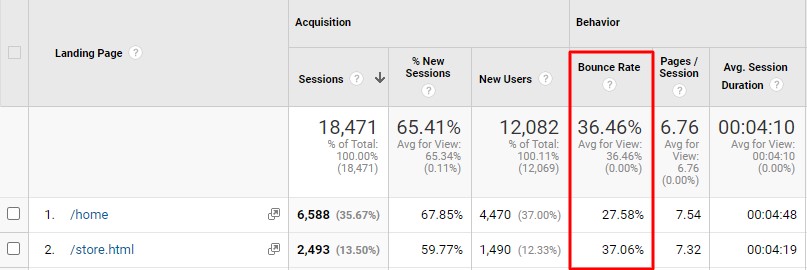How can Field Service Businesses Measure the Success of their Digital Marketing Efforts

You know what they say, “In the field service industry, digital marketing can sometimes feel like trying to catch a unicorn.” Okay, maybe nobody says that exactly, but bear with me here.
As a startup founder or service provider, you’re constantly juggling multiple tasks, from managing operations to delivering top-notch customer service. The last thing you need is the added challenge of figuring out how to measure the success of your digital marketing efforts in this ever-evolving landscape.
Here’s the reality: measuring the effectiveness of your digital marketing strategies is not just a nice-to-have, it’s a must-have. It’s the compass that guides your decision-making, ensuring that you are on the right track to success.
After all, you can apply marketing strategies all day long, but if they aren’t effective, those efforts become mere shots in the dark.
Let’s face it, traditional metrics like click-through rates and impressions can only tell you so much. So how do you navigate this complex terrain and determine if your digital marketing strategies are truly paying off?
With more than a decade of exposure to delivering solutions in the field service industry, FieldCircle understands how a field service business can align digital marketing strategies to steer themselves to new heights.
So, in this blog post, we’ll guide you through the process of measuring the success of your digital marketing practices. We’ll explore key metrics, tools, and strategies that will empower you to tailor your field services and messaging for optimal impact.
Understanding Key Performance Indicators (KPIs) for Field Service Businesses
As a startup founder or service provider, you don’t want to be lost in a sea of data or drowned in complex metrics. You need simplicity and clarity. That’s where KPIs come in. They provide you with actionable insights and measurable goals that reflect the unique nature of your field service business.
Defining Goals and Objectives for Digital Marketing
Before diving into the world of KPIs, it’s essential to establish clear goals and objectives for your digital marketing endeavors.
What do you hope to achieve? Are you looking to increase brand awareness, generate leads, or improve customer retention?
Defining these goals not only gives your digital marketing efforts a sense of purpose but also helps you align your strategies with your overall business objectives.
Consider the example of a plumbing service provider. Their goal may be to increase customer inquiries and bookings. In this case, their digital marketing objectives would revolve around driving traffic to their website, optimizing their online booking system, and enhancing their online presence.
Beyond the Basics: Explore KPIs That Reflect Your Unique Service Offering
Now that you have defined your goals, it’s time to delve deeper into KPIs that accurately help in measuring digital marketing efforts.
While standard KPIs like website traffic and conversion rates are important, they may not provide a comprehensive understanding of your unique service offering.
For instance, if you provide specialized HVAC installation and repair services, you may want to track KPIs such as the number of service requests received, the percentage of requests converted into appointments, and customer satisfaction ratings for HVAC-related jobs.
These KPIs give you a more tailored and insightful view of your digital marketing success in relation to your specific field service niche.
Strategies to Measure the Success of Digital Marketing Initiatives
As a field service provider, it’s essential to track the effectiveness of your digital marketing campaigns to ensure they yield tangible results. So, how can you measure this success and make data-driven decisions to propel your business forward? Let’s dive in!
Analyzing Website Traffic and User Engagement:
In the vast online landscape, understanding visitor metrics, pageviews, and session duration is key. These metrics provide valuable insights into how users interact with your website, helping you gauge the effectiveness of your digital strategies. By unraveling the mysteries behind these numbers, you can uncover hidden opportunities and make informed decisions that propel your field service business forward.
Dive into Data:
You need to go beyond surface-level metrics and delve into visitor analytics for measuring digital marketing efforts. By analyzing visitor metrics, such as the number of unique visitors, you can gauge the reach and effectiveness of your marketing campaigns.
But it doesn’t stop there. Pageviews and session duration provide valuable information about user engagement and interest.
For instance, if a visitor spends an average of 30 seconds on your website, quickly skimming through a few pages before bouncing away. Does this indicate success or failure? Without context, it’s challenging to determine. But fear not, we’re here to break it down.
By diving deeper into pageviews and session duration, you gain a clearer understanding of user behavior. Are they exploring multiple pages, indicating genuine interest? Or are they quickly leaving after landing on a specific page?
Understanding these patterns helps you identify areas for improvement and optimize your website to keep visitors engaged.
Imagine the impact of increasing session duration by just a few seconds. Those extra moments allow you to showcase your field service offerings, establish trust, and capture valuable leads.
Bounce Back Stronger:
Bounce rates and exit pages can be the Achilles’ heel of any website, including yours.
High bounce rates and unexpected exits can leave you wondering why visitors come and go without taking the desired actions. You can see the numbers on your analytics dashboard.

But fear not, for there are ways to bounce back stronger and turn those fleeting glances into lasting connections.
To effectively tackle bounce rates and optimize your exit pages, consider implementing these key strategies:
- Craft captivating headlines: Grab your visitors’ attention right from the start with compelling and intriguing headlines that pique their curiosity.
- Create engaging content: Ensure that your website content is informative, relevant, and valuable to your target audience. Use storytelling techniques, visuals, and interactive elements to enhance engagement.
- Improve page load speed: Slow-loading pages can frustrate visitors and prompt them to leave. Optimize your website’s performance to deliver a seamless browsing experience.
- Enhance user experience: Make navigation intuitive and user-friendly. Simplify the layout, remove distractions, and ensure easy access to key information.
- Streamline call-to-action (CTA): Make your CTAs clear, persuasive, and prominently displayed. Guide visitors to take the desired actions and lead them deeper into your website.
- A/B testing and optimization: Continuously test and experiment with different strategies, designs, and content elements to find what resonates best with your audience.
By fine-tuning these critical elements, you can entice visitors to stay longer and take the desired actions.
Cracking the Code on Social Success
In the digital marketing landscape, field service businesses often find themselves in a conundrum when it comes to measuring the success of their efforts. It’s like trying to crack a secret code without the right tools. But we’ve got the insider knowledge to help you decode the mysteries of social media.
Social Signals:
In social media, followers, likes, and shares become the metrics of interest. These virtual badges of engagement hold valuable insights into the effectiveness of your digital marketing campaigns.
Rather than merely chasing vanity metrics, it’s essential to analyze the quality of your social signals. For instance, having a substantial number of followers is impressive, but what truly matters is the level of engagement they exhibit. Are they actively liking and sharing your content? Are they leaving comments and sparking conversations?
By evaluating these social signals, you can gauge the level of resonance your digital marketing campaigns have with your target audience. It’s not about the quantity but the quality of engagement that determines success. So, keep an eye on the number of likes, shares, and comments your social media posts generate.
The Conversationalists:
Engagement is vital to establish a formidable presence on social media. And one key metric to assess engagement is through assessing comments.
But it’s not just about counting the comments; it’s about diving deeper. Look beyond the numbers and analyze the sentiment and tone of the comments. Are they positive and enthusiastic? Do they reflect genuine interest and engagement? This analysis helps you understand the level of connection you’ve established with your audience.
Additionally, pay attention to the engagement rate – the percentage of people who interact with your posts compared to the total number of followers. A high engagement rate indicates that your content resonates with your audience, creating a sense of community and loyalty.
To measure the success of your digital marketing initiatives, consider employing tools that track social media metrics, such as reach, impressions, click-through rates, and shares. These metrics provide valuable data to evaluate the effectiveness of your content and identify areas for improvement.
Turning Clicks into Customers
Conversion Funnel
One key strategy is to understand and optimize your conversion funnel. By tracking click-through rates (CTRs) and conversion rates, you can gain valuable insights into the effectiveness of your digital marketing campaigns.
Analyzing the percentage of visitors who progress through each stage of the funnel provides a clear picture of where potential customers might be dropping off, allowing you to make data-driven improvements to your customer journey.
Landing Page Mastery
Your landing pages play a crucial role in converting clicks into customers. By focusing on optimizing conversion elements and enhancing user experience, you can maximize the impact of your digital marketing initiatives.
Elements such as compelling headlines, persuasive call-to-action buttons, and streamlined forms can significantly improve your conversion rates.
Additionally, paying attention to the overall user experience, including page load speed, mobile responsiveness, and intuitive navigation, ensures that visitors have a seamless and engaging experience, increasing the likelihood of conversions.
Remember, in the field service industry, your digital marketing initiatives are not just about generating clicks but about acquiring customers who genuinely benefit from your services.
These strategies provide a solid foundation for measuring digital marketing efforts, helping you achieve your business goals and drive meaningful results.
Unlocking the Power of the Inbox
Email marketing continues to be a powerful tool for field service businesses looking to connect with their audience on a personal level. The inbox, a virtual gateway to potential customers, holds immense potential for measuring the success of digital marketing activities. By leveraging the right strategies, businesses can unlock valuable insights and optimize their email campaigns for maximum impact.
Open, Click, Convert
The success of an email campaign hinges on two critical metrics: open rates and click-through rates. Open rates indicate the percentage of recipients who actually open the email, while click-through rates measure the number of people who click on links within the email.
These metrics provide valuable insights into the effectiveness of your email subject lines, content, and call-to-action buttons.
By tracking and analyzing these rates, field service businesses can gauge the level of engagement and interest among their target audience, allowing them to refine their email marketing strategies and drive higher conversion rates.
Customer Connections
In the fast-paced digital world, building and nurturing customer relationships is essential for the success of field service businesses.
Tracking key metrics such as subscriptions, unsubscribes, and revenue from email campaigns helps gauge overall customer engagement and the success of digital marketing efforts. By monitoring the number of new subscribers, the rate of unsubscribes, and the revenue generated from email campaigns, businesses can evaluate the effectiveness of their email marketing strategies in attracting and retaining customers.
This data also provides valuable insights into customer preferences, enabling businesses to tailor their communication and offer personalized experiences that drive conversions and long-term loyalty.
Climbing the Rankings
By improving your online visibility and reaching higher positions in search engine results, you can attract more potential customers and stand out from your competitors.
Search Visibility
One of the key aspects of climbing the rankings is monitoring your keyword rankings and organic traffic. By keeping a close eye on how your website ranks for relevant keywords, you can assess the effectiveness of your SEO (Search Engine Optimization) efforts.
Are you appearing on the first page of search results? Are you targeting the right keywords that align with your field service business? Analyzing this data allows you to identify areas for improvement and make necessary adjustments to enhance your visibility.
Additionally, tracking organic traffic provides valuable insights into the performance of your digital marketing strategies. Are you experiencing an increase in website visitors from search engines? Are these visitors engaging with your content and converting into leads or customers?
Monitoring organic traffic helps you understand the effectiveness of your overall digital presence and the impact it has on driving relevant traffic to your website.
Technical Triumphs
Another crucial aspect of measuring digital marketing success is assessing the technical aspects of your website. Site speed and mobile-friendliness play a significant role in user experience and search engine rankings.
Slow-loading websites can deter visitors and negatively impact your search engine rankings. By evaluating your site speed and identifying opportunities for improvement, you can enhance user satisfaction, reduce bounce rates, and increase the chances of conversions.
Similarly, with the increasing use of mobile devices, ensuring that your website is mobile-friendly is essential. Responsive design and optimized mobile experiences contribute to improved user engagement and search engine visibility.
Conclusion
As field service businesses navigate the digital marketing landscape, the art of measurement becomes paramount. Reflecting on your journey in digital marketing for service businesses allows you to gain valuable insights and understand what works and what doesn’t.
As a good field service tracking software optimizes your operational efforts, likewise, a well-framed digital marketing strategy can improve your visibility in the market.
It’s not just about tracking numbers; it’s about embracing the power of data to drive continuous improvement. By leveraging data, you can make informed decisions, optimize your strategies, and propel your business onward and upward.
Every click, every conversion, and every engagement provides an opportunity for growth. So, don’t shy away from the numbers; instead, embrace them as your guide on this exciting journey. Get in touch in case you would like to explore more.


